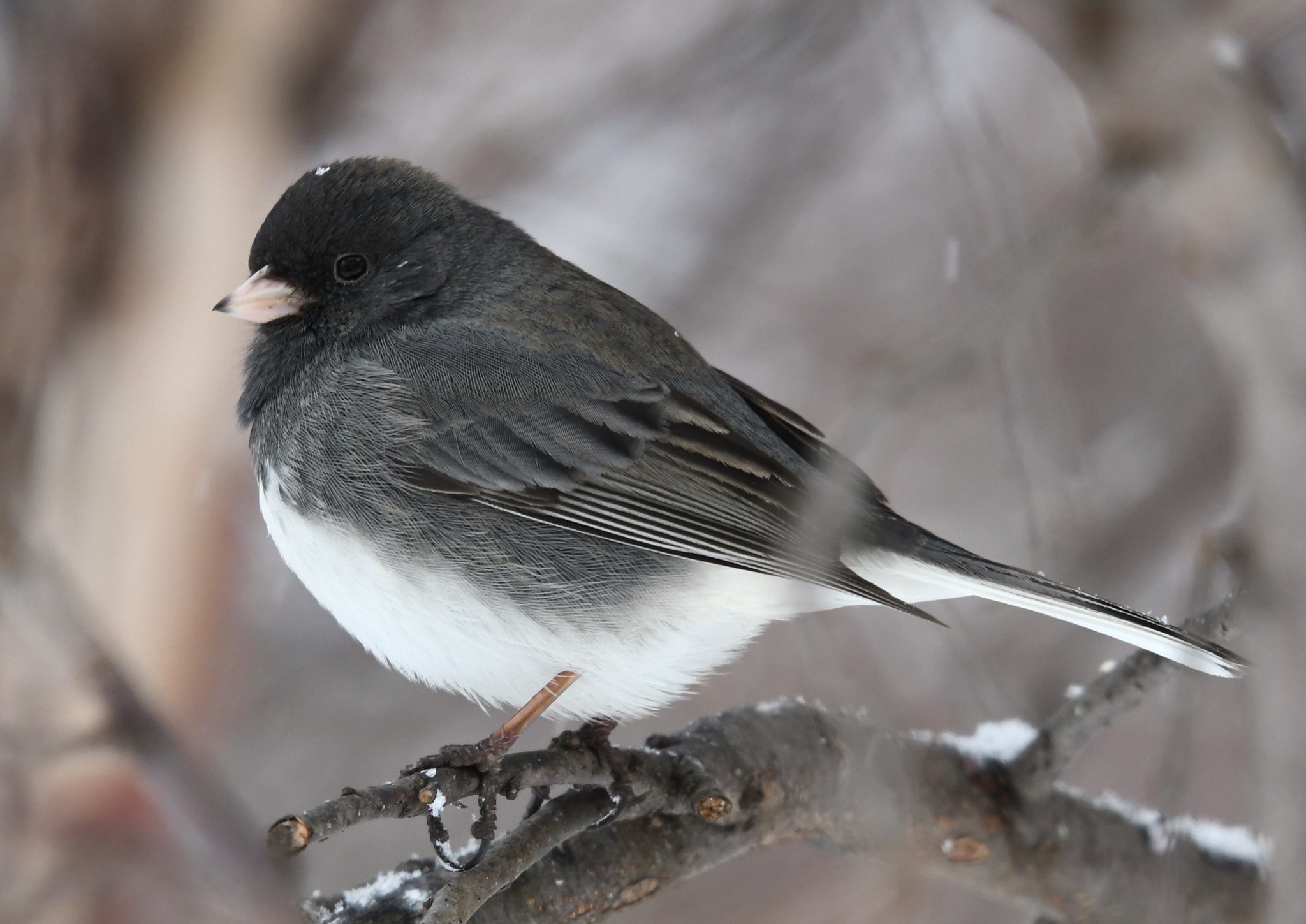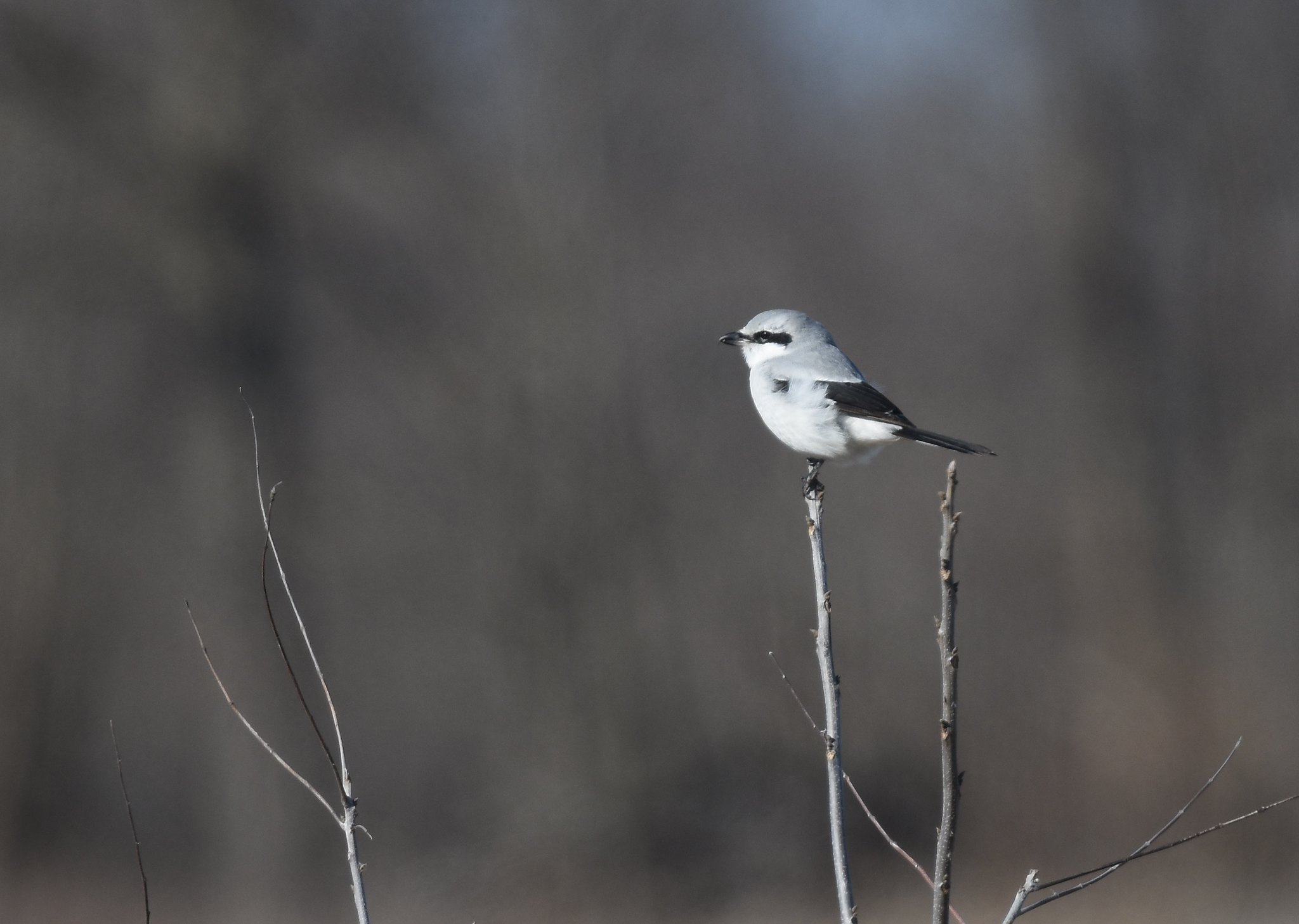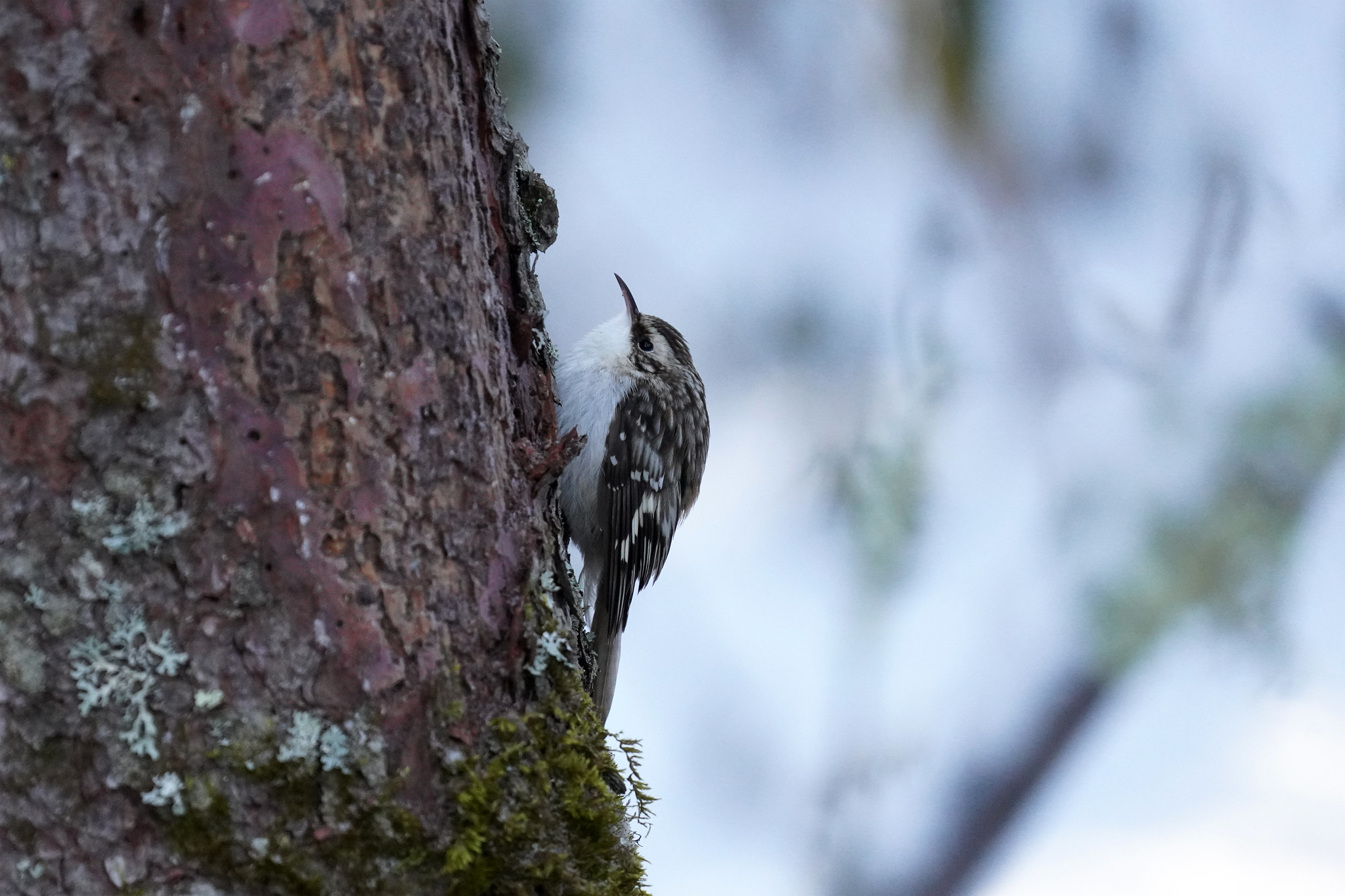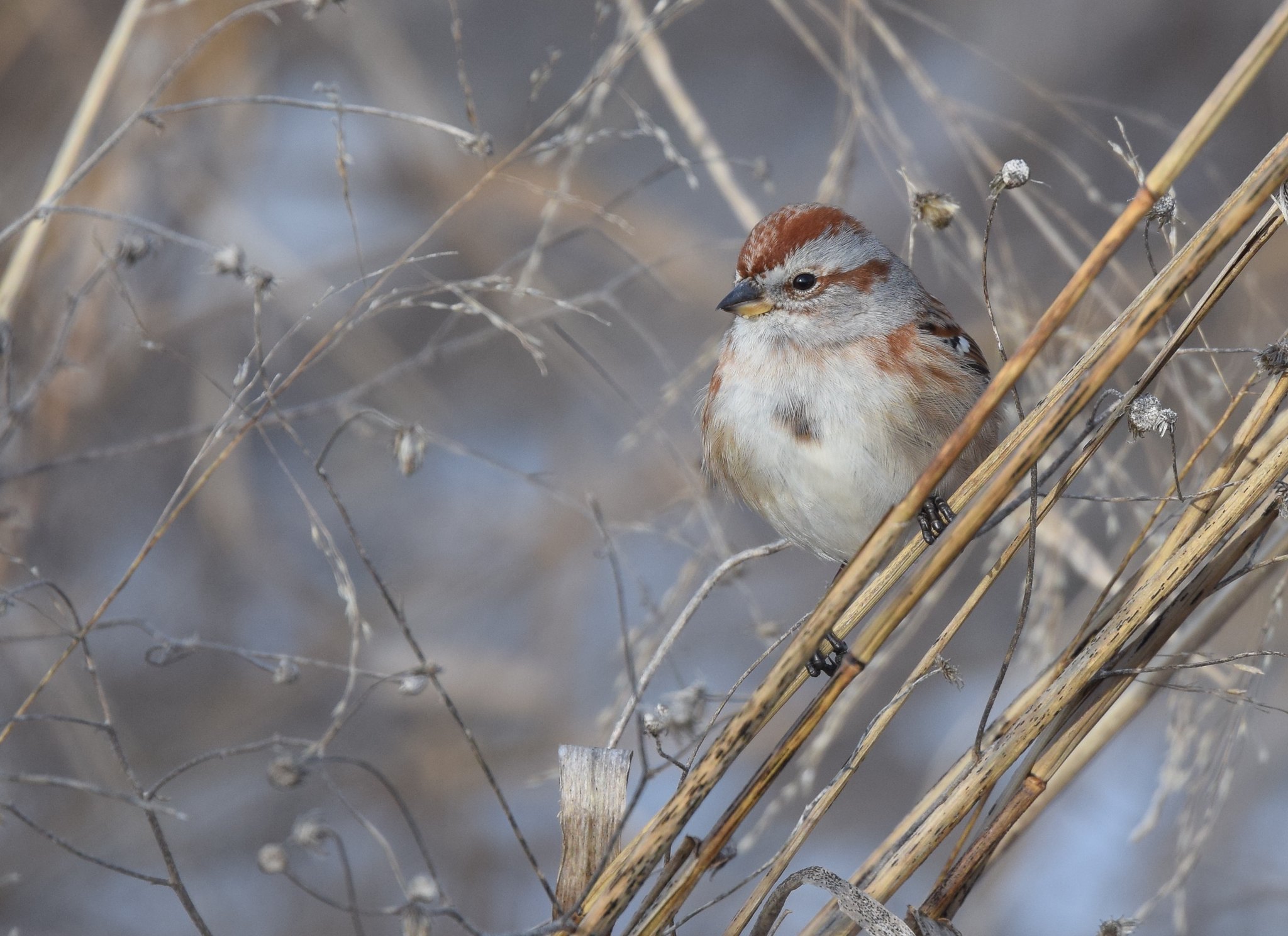Minnesota's own snow birds: 4 species you can see here only in winter

Just like spring warmth brings new birds to the Twin Cities, so does the winter chill. That includes the northern shrike, which you'll likely only see in Minnesota in winter. (Photo by Keith Olstad, used with permission)
The winter destinations of many migrating bird species read like a list of dream vacation spots. Imagine following the nighthawks to Argentina or the great blue herons to Mexico, the bobolinks to the Andes grasslands, rose-breasted grosbeaks to the Bahamas.
Some migrating species don't need to head that far south to find satisfactory overwintering sites. For birds escaping the Arctic freeze, Minnesota in January can be plenty balmy.
Though often overlooked, our coldest months of the year are actually an opportunity to find some feathered visitors that are only in the area for a portion of the year. And, the lack of leaves on trees and shrubs can make our feathered friends easier to spot.
Want to try some winter birdwatching? Here are four seasonal visitors that — barring rare or unexpected appearances — you'll only find in the Twin Cities during the colder months.
Dark-eyed junco
The arrival of these sparrows in Minnesota each fall marks the unofficial changing of the seasons. Juncos are often a steely gray with a white front and pale bill, though their colors can vary based on the region. They tend to stick to the ground, particularly near brush, where they peck for seeds.
ID tip: One telltale sign is a rapid, blink-and-you'll-miss-it fan of the tail as they hop on the ground, which shows as a flash of white. But in general, if you see a small gray bird on the ground in the Twin Cities in winter? It's almost certainly a junco.
Where to find it: Juncos are common at most FMR restoration sites in the winter. Just look for spots in or along forest. They visit urban and suburban feeders as well.
Northern shrike
Fierce. Deadly. Dangerous. Not words you’d usually associate with a songbird, but all of them apt for the northern shrike. No bigger than an American robin, the northern shrike relies on keen hunting skills and its hooked bill to prey on small birds, mammals and insects. It will sometimes impale its prey on sharp points for later.
ID tip: Northern shrikes sport a white front and silvery back, with a striking black face mask, wings and tail feathers. They are often perched alone atop trees next to open, brushy spaces. They are similar to the state-endangered loggerhead shrike — though you’ll typically only see those in Minnesota in the summer.
Where to find it: Scattered shrubs in open prairies give shrikes cover for hunting, but they also perch conspicuously on top of standing dead trees. Vermillion River AMA in Vermillion Township and William H. Houlton Conservation Area in Elk River have both habitats and offer opportunities to see the northern shrike (and FMR's restoration work).
Brown Creeper
Small and well-camouflaged, the brown creeper is a delight to see — if you can manage to spot it. These birds have slender, downturned bills which they use to probe for food while scooching along tree trunks, their streaky brown and white-flecked feathers easily blending in with the bark. Creepers are year-round residents in the northeastern portion of the state, but become commonplace throughout the Twin Cities metro when winter approaches.
ID tip: Listen for their high-pitched, trill-like call, then scan nearby trees for movement. Creepers almost always flutter to the tree’s base before moving up along its trunk.
Where to find it: Wooded areas, particularly with older, large trees. FMR restoration sites like the Mississippi River Gorge in Minneapolis, Cottage Grove Ravine Park and Crosby Farm Regional Park in St. Paul offer good opportunities.
American tree sparrow
This sparrow’s rust-colored cap and matching eyeline (the mark that extends behind its eye) stand out against it's gray face — as well as the snow-blanketed open areas these birds prefer. They breed in the furthest reaches of the boreal forest, just before it gives way to the Arctic tundra.
ID tip: In addition to the rusty head and face marks, look for a small, fuzzy dark spot on the center of its breast, and a bicolored bill — black on top, yellow on the bottom.
Where to find it: American tree sparrows prefer more open habitat, like shrubby fields or prairies along woodland edges. You can find this habitat at FMR sites Grey Cloud Dunes SNA in Cottage Grove, Pine Bend Bluffs SNA in Inver Grove Heights and Bailey Point Nature Preserve in Elk River.
'Irruptive' special guests
Occasionally, some species will venture outside of their normal wintering grounds in what are known as "irruption" years. This irregular phenomenon is thought to happen primarily for one of two reasons:
- A scarcity of available food in their usual range
- An abundance of a particular food source (such as pine cones) just outside of that range
Both of these events can drive birds into areas you wouldn't usually find them. While northern Minnesota is more likely to get these influxes, they can sometimes reach all the way down to (and even beyond) the Twin Cities. Here are a few examples of irruptive species you might spot some winters:
Redpoll: Small, arctic finch with a bright red cap. Redpolls may not make it down to the Twin Cities for many years in a row — only to show up en masse at natural sites and even urban bird feeders one winter.
Pine siskin: A streaky, yellow-tinged finch with unpredictable winter habits, this bird moves in flocks based on available seed supply.
White-winged crossbill: These eye-catching birds with twisted, uneven bills generally remain in the far north. But during years when pinecone crops are sparse, they can head further south, occasionally even gracing the tops of Twin Cities pines. (Be careful not to confuse it with the more common red crossbill.)
Snowy owl: These owls look as if they are the embodiment of winter: Full and fluffed, well-camouflaged with the open, snow-covered fields they prefer and with penetrating yellow eyes. Snowy owls captivate birders and non-birders alike when they show up in large numbers.
Help protect our flyway
The Mississippi River and its surrounding habitat is vital for birds and other wildlife, particularly during spring and fall migration. Want to help keep our local Mississippi River flyway healthy? Volunteer with us to steward habitat or become a member to support this work. Learn more about the many special places where FMR works throughout the Twin Cities region.



